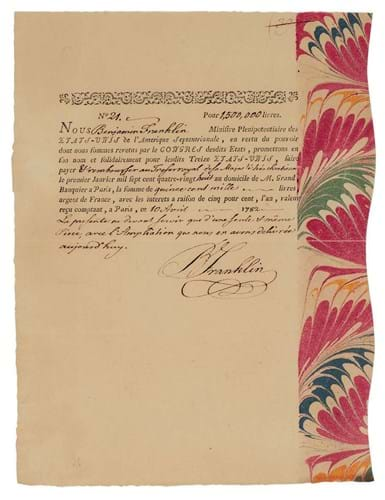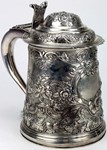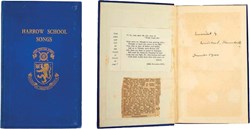
The front portion of the extraordinary letter by the Nobel Prize-winning biophysicist Maurice Wilkins sold at Christie’s New York for $260,000 (£210,185).
Revealing the personal emotions and rivalries surrounding the discovery of the double-helix structure of DNA, an autograph letter by the Nobel Prize-winning biophysicist Maurice Wilkins (1916-2004) led a Christie’s New York (26/20/14.5% buyer’s premium) auction.
It took $260,000 (£210,185) in the sale that ran from January 13-27 rather than the suggested and very modest sum of $3000-5000.
Written on headed notepaper of the Biophysics Research Unit of King’s College London in May 1953 and addressed to a colleague, Leonard Hamilton, it both accuses Rosalind Franklin of “sabotage” and acknowledges her “very useful contributions” in the same sentence.
In part, the letter reads: “In any place which doesn’t give the briefest reference to Xray work I suggest you mention Franklin’s name too…” but then goes on to add a rather different view.
“Mind you the silly bitch botched the whole business so effectively that I don’t think she should be mentioned too often but she did make very useful contributions (as well as sabotage) & as her papers get frequent reference it would look odd not to have her name in somewhere.”
Had she not died of ovarian cancer in the following year, aged just 37, it is possible that Franklin could have shared in the Nobel Prize with Wilkins. Although it cannot be shared by more than three people, it was later suggested by the US molecular biologist, geneticist, and zoologist, James Watson, that the most fair allocation, had Franklin lived, would have been himself and Crick sharing the Nobel Prize for Medicine and Franklin and Wilkins sharing that for Chemistry.
Medals were eventually awarded to Watson, Crick and Wilkins but not until 1962.
Crick concerns
Two earlier letters in Crick’s hand, one dating from March 1953 and the other from December 1955, revealed his concerns regarding who was getting the credit for the discovery of the double-helix structure of DNA.
One of them more trebled the high estimate to sell at $220,000 (£177,850) and another made $80,000 (£64,675) instead of the suggested $6000-9000.
Franklin’s Paris press

The ornately fashioned, partly printed and partly autograph loan agreement between France and the US, drawn up and signed by Benjamin Franklin in 1782, which sold for $170,000 (£137,190) at Christie’s New York.
Among the sale’s earlier successes was a document produced by Benjamin Franklin at the press that he operated at his home in Passy, on the outskirts of Paris, during the many years (1776-85) that he spent in France while serving in his country’s diplomatic service as Minister Plenipotentiary of the United States.
Partly accomplished in his own hand and boldy signed, this was a promisory note or document of April 1782 that acknowledged a loan of 1,500,000 silver Livres made to the newly created United States by the Royal Treasury of France. It sold at $170,000 ($137,190).














